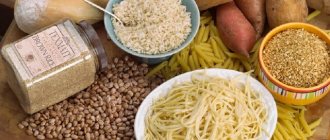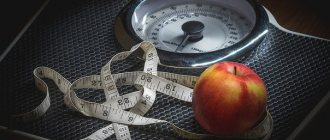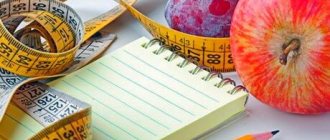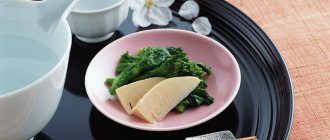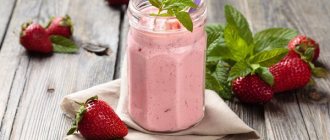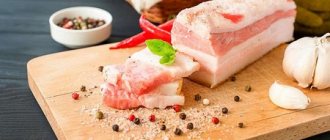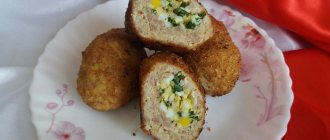“Space diet” by Sergei Sivokho: without denying himself anything, the comedian lost 42 kg in 3 months
Residents of the “Celestial Empire” are distinguished by their slimness and elegance. Miniature Chinese owe their figure not only to good genetics, but also to nutritional culture. Everyone knows that Chinese people prefer rice and sea fish in their food, that is, they eat healthy and low-calorie food. In this regard, a special diet was developed, called Chinese, which allows you to get rid of 6-10 kilograms in just 14 days. The Chinese diet has been adapted for Russian residents to make it easier to follow.
The essence of the Japanese diet for 14 days
The optimal duration of the Japanese diet is 2 weeks or 14 days. In this case, a person losing weight will need to eat foods that are low in calories. There are few carbohydrates per day, the main emphasis is on proteins.
For a full two-week weight loss course, no more than 2,000 rubles will be spent. In this case, you will be able to lose about 5-8 kg. However, you need to immediately tune in to the fact that the Japanese diet is strict and requires a certain amount of endurance from a person.
If, after completing the weight loss process, you leave the diet according to all the rules, the results will last for a long time.
The Japanese diet has some restrictions. For example, it is not recommended for use by pregnant women or nursing mothers. People suffering from gastritis or stomach ulcers, kidney and liver diseases, and cardiovascular pathologies should not adhere to the menu presented below. But even if a person does not have serious health problems, before going on a diet, you should definitely consult a doctor.
results
The duration of the diet varies from 7 to 21 days. It is better to choose a long period. Thanks to this, the body will not only get rid of excess fat, but also quickly adapt to a new diet. By following the rules, you can lose 4–7 kg in a week.
During the Chinese diet, you can get rid of 3 to 11 kg of excess weight in 3 weeks. The results depend on the initial weight of the person losing weight and the correctness of the tasks.
The Chinese diet is often prescribed by specialists to people who want to get rid of a sagging belly, as well as gain slimness and become the owner of a thin waist.
Why is the diet called “Japanese”?
Surely a person who hears the phrase “Japanese diet” for the first time immediately imagines a menu with an emphasis on rice, soy sauce, seafood and other favorite dishes of this eastern country. In fact, the only thing that will remind you of Japan on the menu will be boiled fish and, possibly, boiled eggs. The diet does not involve any delights or exotics. All products are well known to Russians, which is a definite advantage of such a diet, since the risk of developing an allergic reaction is minimized. In addition, all products are freely available and are not expensive at all, so there will be no problems finding ingredients for cooking.
It’s difficult to say why the diet is called Japanese.
There are two versions of the origin of the name of the diet:
- There is an assumption that the menu was compiled by nutritionists from a clinic in Tokyo.
- According to another version, the diet is called Japanese because of the clear and simple scheme of its use. By adhering to the basic rules of dietary nutrition, a person will definitely get the desired result. This is very similar to the Japanese philosophy: give your best and you will be rewarded.
It is also known that the Japanese are very reserved when it comes to food. They eat food in small portions, each of which consists of low-calorie foods. This is the principle that forms the basis of the diet. The famous Japanese nutritionist Naomi Moriyama believes that it is the moderate consumption of food by her compatriots that allows them to break all longevity records.
Naomi conducted a comparative analysis, as a result of which it was possible to establish that the Japanese consume on average 25% fewer kilocalories per day than residents of other countries. Butter, chocolate, chips and baked goods are not popular in the Land of the Rising Sun. We can say that moderation in food is one of the features of culture. The same distinctive feature is inherent in the Japanese diet.
Rules for an effective Japanese diet
Russians, unlike the Japanese, are not used to limiting their food intake, so following such a diet can be quite problematic for them. Moreover, it is actually strict, although a person receives fats, proteins, and carbohydrates.
Sources of carbohydrates include vegetables, fruits and crackers. Fats enter the body along with olive oil, fish and meat. A person will get proteins from chicken, eggs, dairy products, fish and beef. There will be no disturbances in the functioning of the digestive organs, since the fiber necessary for the intestines is present in the diet in sufficient quantities. It is found in abundance in vegetables and fruits, which on some days can be eaten with almost no restrictions.
Also, while following a dietary diet, a person is allowed to drink coffee and green tea. These drinks not only perfectly tone you up, but are also a source of antioxidants. But for this you need to purchase only high-quality tea and coffee.
There is a convenient application for Android devices - Japanese Diet, which provides its users with a different menu for every day. It is convenient to make a shopping list and receive a variety of information about your diet. But this application has one drawback - it only works in English, although for most Russians this is not a problem.
Despite the fact that the body receives all the substances necessary for life, their quantity is very limited. Therefore, you cannot stick to the Japanese diet for more than two weeks. In addition, if, while following a dietary diet, you suddenly feel unwell, have body aches or headaches, then you need to leave the diet. If possible, you should see a doctor.
While following the Japanese diet, it is very important to maintain an adequate drinking regime. You need to consume at least 1.5-2 liters of clean water without gas per day. It's good if it's at room temperature. This will not only reduce the feeling of hunger by filling the stomach, but will also allow the intestines to perform their functions normally.
If you strictly follow all the rules of the Japanese diet, then losing weight in 14 days is quite possible. You cannot replace one product with another at your own discretion, even if it seems that they are very similar. Unless your morning cup of green tea can be easily replaced with a serving of coffee and vice versa. But adding sugar or milk to the drink is strictly prohibited. By the way, salt will also need to be removed from the menu, or food should be seasoned with it in minimal quantities.
You can only come to the table three times a day instead of the usual 5-6 meals. Snacks are not included in the diet. The last meal should be no later than two hours before bedtime. Be sure to drink a glass of warm water every morning on an empty stomach. This will start metabolic processes, and will also make it easier to tolerate the absence of breakfast.
The body must be prepared in advance before entering the diet. For about a week, you should stop eating sweets and fast food. From this time you need to start reducing portion sizes. The psychological attitude towards the upcoming hunger strike is no less important. Perhaps the fact that after completing the diet (provided you follow all the rules) you will be able to get rid of at least 5 kg will give you strength.
Basic Rules
There are rules, the implementation of which guarantees a positive result of the general condition:
- Before starting a weight loss course, you should prepare your body to change your diet to reduce stress and strain. Every day, before breakfast, 5 days before entering the restrictions, you need to drink 400 ml of cool boiled water. This procedure will prepare the intestines and, while eating the right food, will begin to quickly establish the process of digestion and metabolism.
- Three meals a day, no snacks. Strict adherence to the schedule activates the clock mechanism of the human body, when the digestive system is adjusted to receive and process food at a certain time. During breaks, accumulated fat is broken down.
- It's harder to get through the first week of a 21-day course . If you put in the effort and be patient, the results on the scale will be excellent.
- The result is easily maintained if you limit the consumption of harmful foods.
Products for the Japanese diet for 14 days
The list of necessary products must be studied in advance so that there is no need to replace any component with another. Moreover, this will negatively affect the results of the diet.
Beverages:
- A pack of green tea, which should not contain any additives or flavorings.
- A pack of ground or bean coffee. The only condition is that the coffee must be of high quality.
- A liter of tomato juice.
- A liter of kefir, which must be fresh.
Vegetables and fruits:
- Two forks of white cabbage. Cabbage should be medium in size.
- Half a kilo of zucchini and eggplant.
- Two to three kilograms of carrots.
- One kilogram of any fruit. Only bananas and grapes are prohibited.
- Two lemons.
Meat and fish:
- A kilogram of lean beef.
- A kilogram of chicken fillet.
- Two kilograms of sea fish fillet.
Other products:
- 20 chicken eggs.
- 0.5 liters of cold pressed olive oil.
Lists of prohibited and permitted products
The main distinguishing feature is a significant restriction of the diet. It is also unusual to replace salt with spices and seasonings, which allow you to partially compensate for the taste. The price of the Chinese diet is affordable for everyone; weight loss requires inexpensive products, which can be found in the supermarket or market. What matters is the freshness and quality of meat and fish; they should not be frozen, otherwise they lose some of their beneficial properties.
Authorized products:
- meat - beef, veal, chicken;
- fish is represented by low-fat varieties, seafood;
- vegetables - all types of cabbage, root vegetables except potatoes and sweet potatoes;
- legumes - asparagus, green peas;
- fruits - apples, pears, citrus fruits;
- fresh herbs;
- porridge - rice;
- eggs;
- olive, sesame oil;
- drinks - natural coffee, green, herbal tea.
Prohibited products:
- confectionery;
- bakery products;
- sausages, smoked meats;
- porridge - buckwheat, oatmeal, bulgur;
- pickles, marinades;
- milk products;
- animal fats;
- meat - pork, lamb, duck, goose;
- sauces;
- alcohol.
Japanese and “chemical” diets for diabetics: what do they have in common?
If we draw analogies between the Japanese diet and other diets for weight loss, then it is as close as possible to a “chemical” diet. The latter was proposed by the American doctor Osama Hamdiy and is intended for the treatment of obesity in people with diabetes.
The Japanese diet also involves a sharp limitation of carbohydrate foods, but at the same time an increase in protein foods in the menu. This allows you to trigger certain chemical reactions in the body that are aimed at burning fat. In this case, no new deposits appear.
However, Osama Hamdiy’s diet is different in that the amount of food eaten is not limited to any portions. At the same time, someone losing weight can exercise, but he will not feel exhausted. In turn, the Japanese diet involves eating fairly monotonous food, but it is not very long. 14 days is enough to reduce your clothing size by about 2 points.
Japanese diet menu for 14 days
- The first day:
- There is no breakfast as such. In the morning, after a glass of water, you are allowed to drink empty coffee.
- For lunch, eat boiled cabbage, 2 boiled chicken eggs and wash it all down with a glass of tomato juice.
- Dinner should consist of fish (200 g). It can be boiled or fried.
- Second day:
- You can have breakfast with coffee without any additives and a piece of rye bread.
- For lunch, cabbage is boiled again, which is supplemented with 200 g of boiled or fried fish. Cabbage is seasoned with vegetable oil.
- Dinner consists of a glass of kefir and boiled beef (100 g).
- Day three:
- For breakfast, they again drink empty coffee, which can be supplemented with biscuits or a piece of rye bread.
- They dine with zucchini or eggplant, which is fried in oil. The number of vegetables can not be limited.
- Dinner consists of raw cabbage with the addition of vegetable oil, boiled beef without salt (200 g) and 2 boiled eggs.
- Day four:
- You are allowed to eat fresh carrots for breakfast. It can be ground and seasoned with lemon juice.
- For lunch, eat 200 g of fish (boiled or fried), washed down with a glass of tomato juice.
- Dinner consists of any fruit, but their volume is limited and amounts to 200 g.
- Day five: This day completely repeats the menu of the fourth day.
- Day six:
- You need coffee for breakfast.
- For lunch, you should boil half a kilo of chicken breast without adding salt. The side dish is a salad of fresh cabbage and carrots with vegetable oil dressing.
- For dinner you can eat carrots and two boiled eggs.
- Day seven:
- There is no breakfast. Instead, you need to drink a glass of green tea.
- Lunch consists of 200 g of boiled beef.
- Eat fruit for dinner (200 g). Alternatively, you can diversify the menu with fresh carrots with vegetable oil and 2 eggs, or 200 g of fried fish, or 200 g of boiled beef. Any of the listed sets of products should be supplemented with a glass of kefir.
- Day eight:
- Breakfast, as usual, consists of a glass of coffee.
- For lunch, eat half a kilo of boiled chicken breast, which is complemented with a side dish of fresh cabbage with vegetable oil.
- Dinner is a couple of eggs and carrots with butter.
- Day nine:
- For breakfast you need to grate carrots and season them with lemon juice.
- At lunch, drink a glass of tomato juice and eat a piece of boiled or fried fish (200 g).
- Dinner consists of fruit (200 g).
- Day ten:
- In the morning you only need to drink a glass of coffee without additives.
- For lunch you are allowed to eat 3 small carrots, cheese (50 g) and a boiled egg. Carrots can be grated and seasoned with vegetable oil.
- Day eleven:
- Breakfast consists of a slice of rye bread and a glass of coffee.
- For lunch, you can fry zucchini or eggplant in oil. You are allowed to eat as much as you want.
- For dinner, boil beef (200 g), 2 eggs and make cabbage salad with vegetable oil dressing.
- Day twelve:
- They have breakfast again with a piece of rye bread and a glass of coffee.
- For lunch, you are allowed to eat boiled or fried fish and complement it with fresh cabbage salad with vegetable oil.
- Dinner consists of a glass of kefir and boiled beef (200 g).
- Day thirteen:
- Breakfast includes a glass of coffee without sugar.
- For lunch, boil 2 eggs and cabbage, wash down the dish with tomato juice.
- They dine with a piece of fish, which can be fried or boiled.
- Day fourteen:
- They only drink coffee for breakfast again.
- They dine on fish and fresh cabbage salad with butter.
- For dinner you are allowed to eat boiled beef weighing 200 g and wash it down with a glass of kefir.
It is believed that the Japanese diet is exactly the weight loss method that gives the most lasting results. It can persist for 3 years or more. However, in order to achieve the desired weight, you need not only to stay on a diet for 14 days, but also to monitor your diet in the future. The main rule is moderation in food and choice towards natural, healthy products. This is exactly what the Japanese diet teaches.
Proper weight loss in Chinese
The main feature of the Japanese diet is the absence of salt and any spices in the diet. All food has a monotonous, bland taste. This is one of the reasons why maintaining this Chinese diet is extremely difficult.
The basic rules during the Chinese diet are as follows:
- Complete refusal of salt, sugar, spices. This means that it is necessary to completely exclude these components from the diet, as well as products containing them: canned food, semi-finished products, store-bought yoghurts, desserts, flour or confectionery products.
- Drink plenty of fluids. The diet implies serious dietary restrictions, which are extremely difficult for the body to perceive. People often experience symptoms of dehydration, weakness, dizziness, and headaches.
- The basis of the diet should be fresh fruits or vegetables. They will help fight hunger and reduce the likelihood of gastrointestinal diseases.
- It is necessary to exclude sweet drinks, juices, and alcohol.
Such serious restrictions can cause serious harm even to a completely healthy person. However, the Chinese diet is definitely contraindicated in the following cases:
- period of pregnancy or breastfeeding;
- diseases of the gastrointestinal tract;
- dysfunction of the liver, kidneys, excretory system;
- gynecological diseases;
- pathologies of the thyroid gland;
- oncology;
- diabetes;
- minor age.
Before switching to such a diet, you must consult with a specialist. Often people are not aware of the presence of any diseases, since they can be completely asymptomatic. And serious restrictions often lead to irreparable consequences.
Menu Features
During the Chinese diet, it is important to monitor your diet and try to create a high-quality, healthy menu from permitted foods. Of course, it will not cover the body’s need for vitamins, minerals and nutrients, but if compiled correctly, it will at least prevent the occurrence of side effects or reduce their severity. Most often, people on the Chinese diet feel weak, dizzy, unwilling to do anything, suffer from headaches, and general poor health.
The list of permitted products is extremely small; it includes several types of vegetables, fruits, meat and eggs. Nutritional value for 100 grams is given in the table:
| Authorized Products | Proteins, g | Fats, g | Carbohydrates, g | Kcal |
| White cabbage | 1,8 | 0,1 | 4,7 | 27 |
| carrot | 1,3 | 0,1 | 6,9 | 32 |
| tomatoes | 0,6 | 0,2 | 4,2 | 20 |
| apples | 0,4 | 0,4 | 9,8 | 47 |
| porridge on water | 3,0 | 0,6 | 18,5 | 91 |
| boiled beef | 25,8 | 16,8 | 0,0 | 254 |
| boiled chicken fillet | 30,4 | 3,5 | 0,0 | 153 |
| chicken eggs | 12,7 | 10,9 | 0,7 | 157 |
| fish | 18,5 | 4,9 | 0,0 | 136 |
| coffee | 0,2 | 0,0 | 0,3 | 2 |
| green tea | 0,0 | 0,0 | 0,0 | — |
| lemon juice | 0,9 | 0,1 | 3,0 | 16 |
| tomato juice | 1,1 | 0,2 | 3,8 | 21 |
In this case, it is recommended to completely exclude the following products from the diet:
- Flour and confectionery products: bread, loaf, flatbread, cookies, sweets, cakes.
- Desserts and sweets: honey, jam, chocolate, marshmallows, ice cream.
- Fast food.
- Sweet carbonated drinks, juices, alcohol.
- Fatty, fried, smoked foods.
Food should be cooked without adding oil. You can use a non-stick frying pan, grill, oven or steamer.
Pros of the Japanese diet
The benefits of the Japanese diet for 14 days are numerous, which is why this diet plan has found such widespread popularity among the masses.
The objective advantages of the Japanese diet are the following:
- The results of using the Japanese diet are very noticeable. In two weeks you can get rid of 5-8 kg.
- If, after completing the diet, you adhere to proper nutrition and eat in moderate portions, then the results obtained can be maintained for an unlimited period of time.
- During the diet, the body is freed from toxins. They go away due to the fact that the diet is completely free of harmful foods, and fiber and large volumes of liquid continue to be supplied. This promotes high-quality intestinal cleansing.
- Diet saves budget. Unlike most other dietary patterns, the Japanese diet does not require any special financial expenditure.
- Many adherents of the Japanese diet note that after it, their complexion improves, fine wrinkles disappear, nails become stronger, and hair stops falling out. It is possible that this effect is due to high-quality cleansing of the body.
- With a smooth entry and gradual exit from the diet, a person’s well-being is not affected and dietary restrictions are tolerated more easily.
- The diet menu does not contain food products that are difficult to find in the market. All of them are freely available all year round.
- The Japanese diet consists of foods that do not pose a danger to Europeans in terms of allergies.
Contraindications
For any diseases of the digestive system and kidneys, such a diet is contraindicated.
You cannot “go on” a Chinese salt-free diet during pregnancy and lactation, as well as for several months after suffering from intestinal infectious diseases and food poisoning.
It is not recommended to “sit” on a low-calorie diet for a long time. It is for this reason that the duration of the Chinese salt-free diet is limited to 14-21 days. That’s why, even if you endure hardships and rejoice at the results achieved, you shouldn’t get carried away. To maintain the results after this period, simply switch to a healthy diet and limit the amount of salt in your diet.
Cons of the Japanese diet
If you decide to lose a few kilograms through food restrictions, you need to study all the disadvantages of the Japanese diet in advance. This is very important, as it will prevent health problems.
Among the disadvantages of the Japanese diet, the following factors can be noted:
- The Japanese diet is very strict, and it can be difficult to maintain it without prior preparation, both psychological and physiological.
- The menu consists of three main meals, with breakfast as such being practically absent and no snacks at all. Therefore, the feeling of hunger will constantly haunt a person who is losing weight.
- The set of products for 14 days is quite monotonous.
- The Japanese diet is not balanced in essential nutrients, so following it for more than 14 days can be dangerous to your health.
- This weight loss system is not suitable for everyone and has certain contraindications. In addition to the fact that it cannot be used by people with diseases of the digestive system, such a menu is unacceptable for kidney and heart patients.


